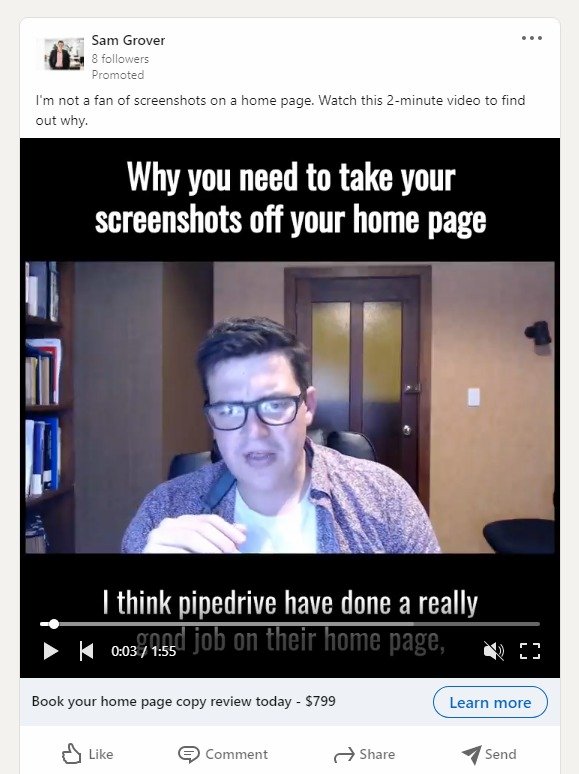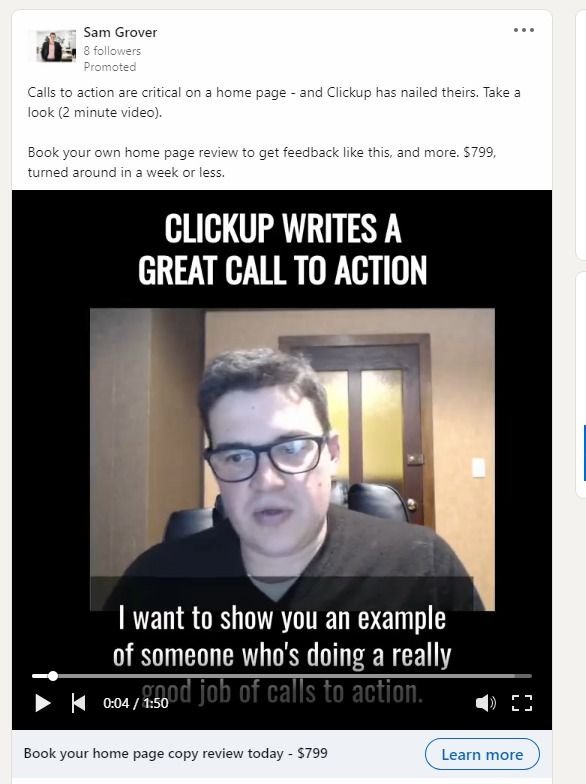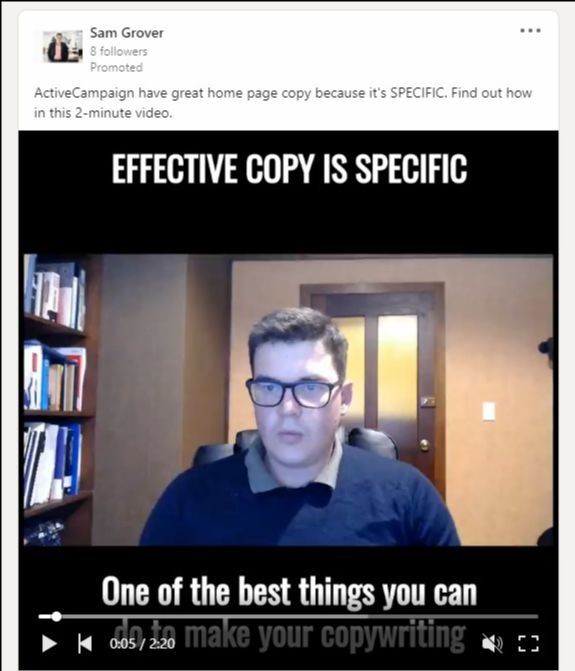How to write headlines that get people to keep reading
(This originally appeared in my newsletter. Sign up now to get content like this, for free, every Monday.)
"The purpose of the headline is to get you to read the next line."
That's a tip you'll see if you pick up basically any copywriting book.
(By the way, happy new year, welcome back, blah blah blah).
Anyway - the implication of that tip is that your headline needs to grab attention and keep people reading.
And this is true! But the details of how you do this can change based on the type of material you're writing. That's what I'm going to break down for you today.
Interruptive vs . . . not interruptive
Pretty much all marketing material can be divided into two categories: interruptive and not interruptive.
Interruptive marketing is exactly what it sounds like. It's something your audience sees that interrupts something else. For example:
A billboard on the motorway interrupts your drive.
A cold call or email interrupts whatever it was you were doing.
A social media ad interrupts your endless scrolling.
These things are being put in front of people who are in the middle of doing something else. They have no reason to read more, or engage with what you have to say. The headline needs to give them a reason to do so. It can't just play it straight - it has to be more interesting than that.
Here's my favourite example, from nearly 100 years ago. This is the headline for an ad for piano playing lessons:
As you can see, it doesn't really say anything about piano playing lessons. It's interrupting people! It has to give a bigger reason to read than that.
It sells the wider result you could get from the piano playing lessons, rather than the lessons themselves. Then, once it's got people reading with that hook, it tells them the details of what it's offering - rather than lead with those details.
(I wrote more about this back in August.)
Playing it straight with non-interruptive stuff
Non-interruptive marketing (sorry, I can't think of a better term) is stuff that people are more "primed" for - or even stuff that they've actively sought out.
Since people have sought out this material in one way or the other, you don't want to use clickbait, or lofty, emotional benefit statements to get them to keep reading. Rather, you want to just tell them what you are going to tell them - play it straight and stick to the facts. For example:
Your website's home page - people have to get there somehow, whether it's from an ad, a Google search, referral or something else.
Landing pages - same thing. Pretty rare for people to accidentally stumble on a landing page.
Sales enablement material, like brochures and slide decks. Again - if someone booked a call with a salesperson, they are at least a little bit mentally prepared for what you have to say.
Newspaper headlines are a good example. They generally just summarise the story in a few words, because they know people have sought out the newspaper and are skimming it for things that might be interesting. They're just going to get irritated if they read a whole bunch of headlines that don't really tell them what the story's about.
Packaging is another good example. Think about all the stuff on the shelves at supermarkets. Those headlines and labels just - literally - tell you what 's in the tin.
The can of tomatoes doesn't tell you the emotional benefits of cooking for your family with tomatoes. That would be ludicrous. Rather, it just tells you that there are tomatoes in the tin, because when you're actively seeking tomatoes, that's the information you need.
Let's look at an example from my business
Here's three ads I'm running on Linkedin at the moment. The goal of these is to get people to watch the two minute video. Take a look:
So we have:
"Why you need to take screenshots off your home page"
"Effective copy is specific"
"Clickup writes a great call to action"
40% of the people who saw that first ad, watched the whole video. By contrast, only 30% of people who saw the other two ads watched the video. That's a pretty big difference!
And you can see why when you analyse these headlines. The second two video headlines are just factual. They're like newspaper headlines - they say what the video is about.
The first one gives a cold audience a reason to watch. It's basically clickbait. "Watch this video and find the answer to this question," it's saying. And it works!
The other ones, by contrast, didn't work as well. And you can see why. The people seeing these ads don't know who I am, and they haven't sat down at their computer to watch videos about home pages. So the "play it straight" format doesn't really work as well as a clickbaity headline did.
Wrap it up
The less your audience knows, the harder you have to work to get their attention - you can't just talk about what your product is and does, but rather need to try and tap into a wider benefit to get them to read.
And conversely, if the material is less interruptive, and the audience is more engaged, then you want to do the exact opposite of that - err towards just telling people what you have to offer, rather than trying to tap into some deep benefit to get their attention. You already have their attention! Your job now is to keep it.
The reason I mention this is because I see organisations muck this up a lot. I often see non-interruptive material that seems to think it's on a billboard or in the subject line of a cold email, trying to tap into some deep emotion when the audience is really just looking to find out more detail. And conversely, I see a lot of interruptive stuff that could work a little harder to give people a reason to click through.
As you saw in the Linkedin ads, this is a mistake I'm not above making myself - two of my three ads made it!
So with a new year, it's a good opportunity to take a look at the headlines of the material you're using. Is it pitched right? Does it recognise the fact that it's interruptive, or not interruptive? Getting these things right can add tons of value to your material without a huge amount of effort - so take the time to have a look.
Have a good week
Sam
PS: Have a bunch of campaigns and so forth planned for this year? Better book a home page review now - there's no sense sending a ton of traffic to your home page if heaps of it doesn't convert. Book now, and you could have a bunch of conversion optimisation feedback this time next week.
PPS: Actually, speaking of campaigns and so forth, let me know what you're trying to achieve this year. What are your big marketing goals? Hit reply and let me know.
If you like what you just read, you can get content like this delivered straight to your inbox at 8am every Monday. Sign up now.




